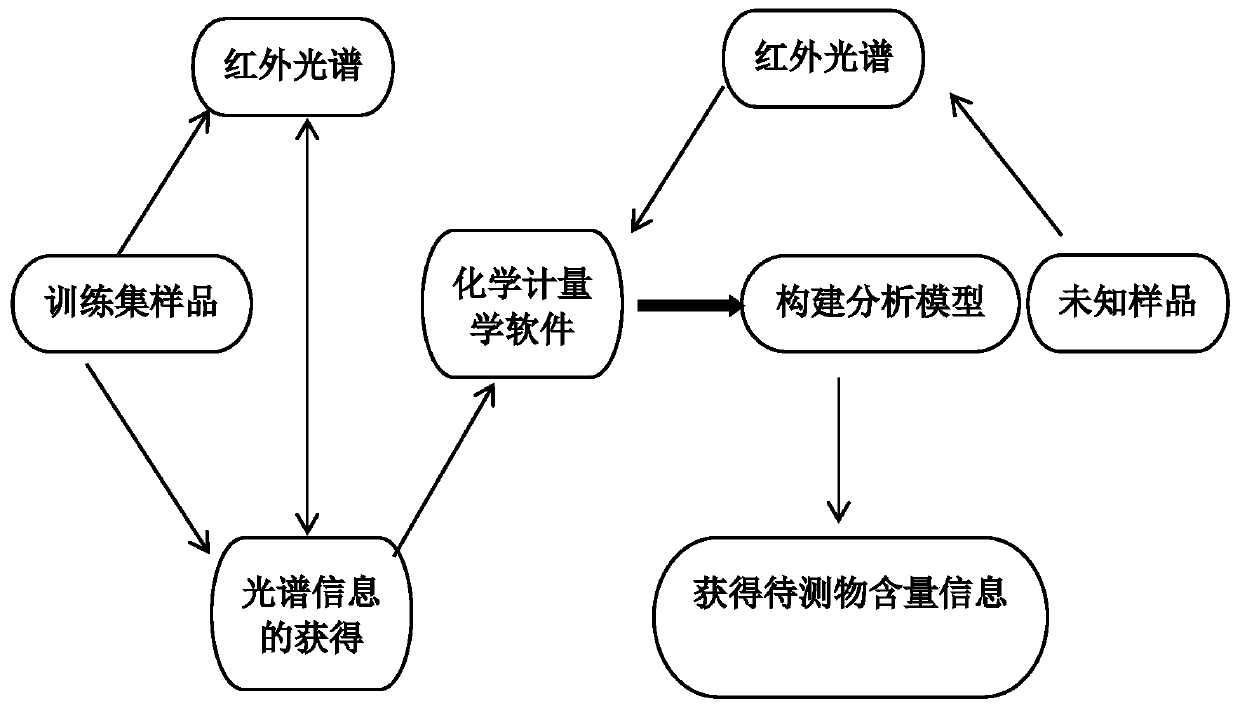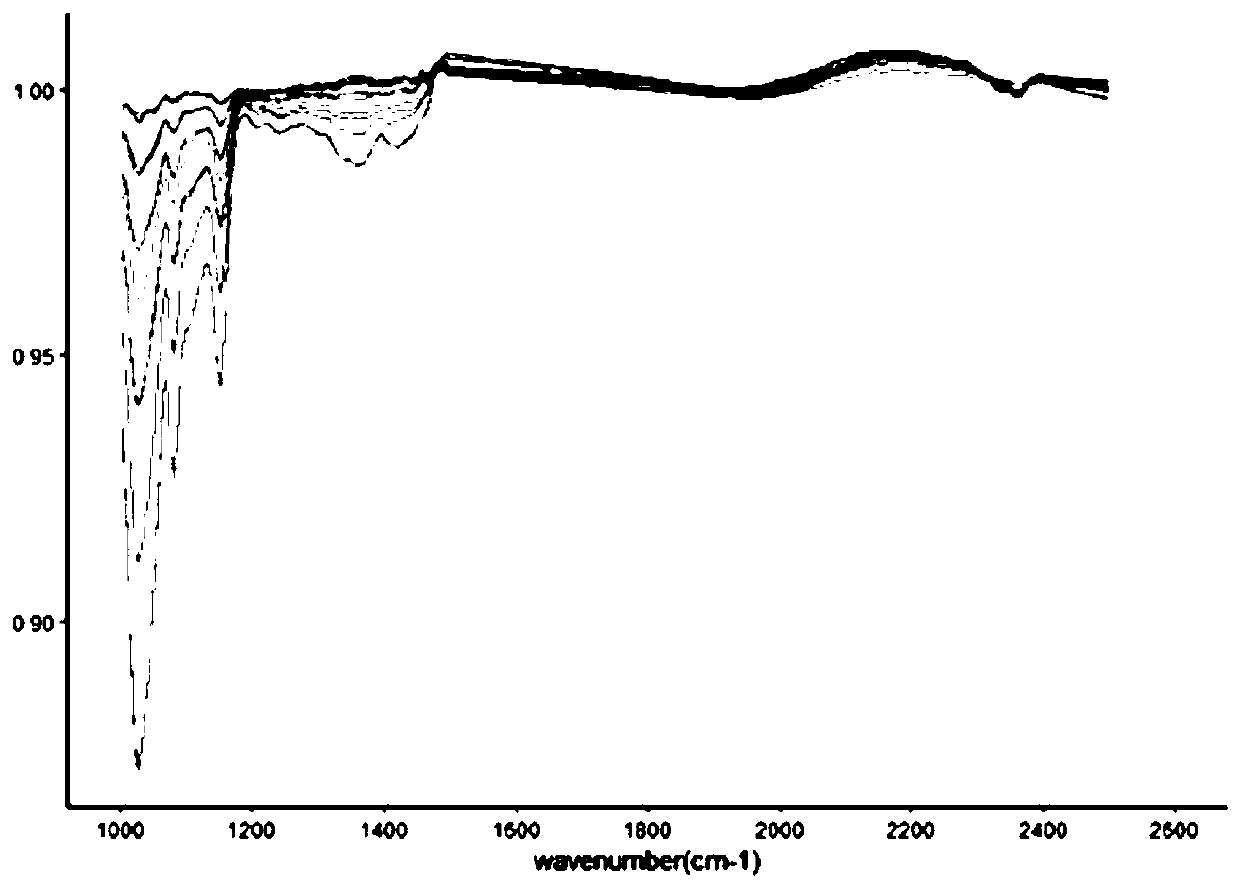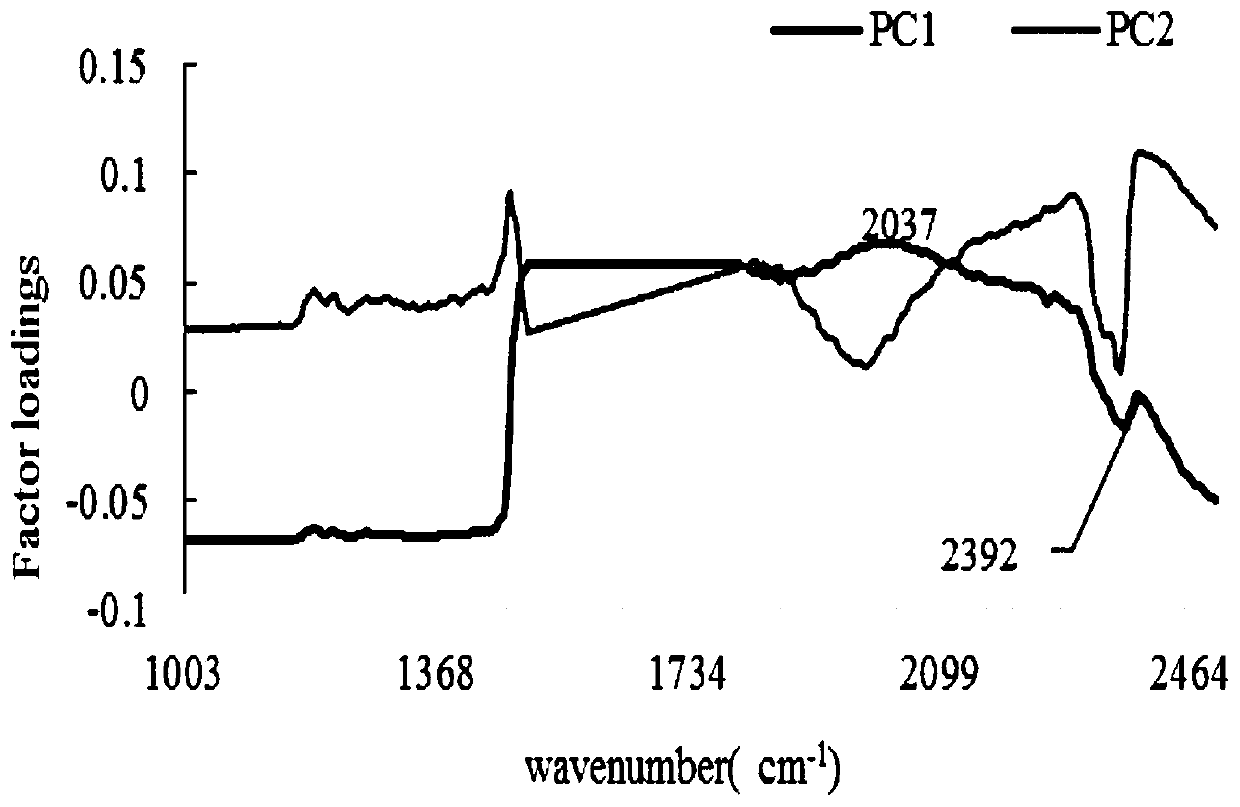Method for quantitatively analyzing lactoferrin content by utilizing infrared spectrum
A technology of lactoferrin and infrared spectroscopy, applied in the field of food detection, can solve the problems of difficult quantitative analysis, complex detection background, and low content of lactoferrin
- Summary
- Abstract
- Description
- Claims
- Application Information
AI Technical Summary
Problems solved by technology
Method used
Image
Examples
Embodiment 1
[0017] (1) Taking whey protein solutions with mass concentrations of 1%, 2%, and 3% as the background, prepare 0.01%, 0.05%, 0.1%, 0.2%, and 0.3% mass concentrations of whey protein solutions with three different mass concentrations Lactoferrin standard sample solution.
[0018] (2) Perform infrared spectrum analysis on the sample to obtain infrared spectrum data.
[0019] (3) Perform principal component analysis on the infrared spectrum data of the collected lactoferrin solutions at various concentrations, the cumulative contribution rate of the principal components PC1 and PC2 exceeds 80%, and use the principal component analysis to screen the wavenumber range corresponding to the absorption peak of the characteristic information.
[0020] (4) Process the spectral data corresponding to the selected wavenumbers with the first-order derivative preprocessing method, establish a PLS quantitative model, and obtain the model determination coefficient and the root mean square error of
Embodiment 2
[0023] (1) Taking whey protein solutions with mass concentrations of 1%, 2%, and 3% as the background, prepare 0.01%, 0.05%, 0.1%, 0.2%, and 0.3% mass concentrations of whey protein solutions with three different mass concentrations Lactoferrin standard sample solution.
[0024] (2) Perform infrared spectrum analysis on the sample to obtain infrared spectrum data.
[0025] (3) Perform principal component analysis on the infrared spectrum data of the collected lactoferrin solutions at various concentrations, the cumulative contribution rate of the principal components PC1 and PC2 exceeds 80%, and use the principal component analysis to screen the wavenumber range corresponding to the absorption peak of the characteristic information.
[0026] (4) Use the spectral data corresponding to the screened out wavenumbers by smoothing to establish a PLS quantitative model, and obtain the coefficient of determination of the model and the root mean square error of the model's prediction.
Embodiment 3
[0029] (1) Taking whey protein solutions with mass concentrations of 1%, 2%, and 3% as the background, prepare 0.01%, 0.05%, 0.1%, 0.2%, and 0.3% mass concentrations of whey protein solutions with three different mass concentrations Lactoferrin standard sample solution.
[0030] (2) Perform infrared spectrum analysis on the sample to obtain infrared spectrum data.
[0031] (3) Perform principal component analysis on the infrared spectrum data of the collected lactoferrin solutions at various concentrations, the cumulative contribution rate of the principal components PC1 and PC2 exceeds 80%, and use the principal component analysis to screen the wavenumber range corresponding to the absorption peak of the characteristic information.
[0032] (4) Using the preprocessing method of smoothing and first-order derivative to screen out the spectral data corresponding to the wave number, establish a PLS quantitative model, and obtain the model determination coefficient and the root mean
PUM
 Login to view more
Login to view more Abstract
Description
Claims
Application Information
 Login to view more
Login to view more - R&D Engineer
- R&D Manager
- IP Professional
- Industry Leading Data Capabilities
- Powerful AI technology
- Patent DNA Extraction
Browse by: Latest US Patents, China's latest patents, Technical Efficacy Thesaurus, Application Domain, Technology Topic.
© 2024 PatSnap. All rights reserved.Legal|Privacy policy|Modern Slavery Act Transparency Statement|Sitemap



